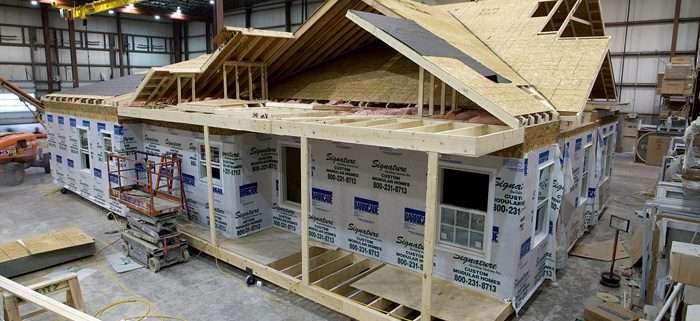The construction industry is constantly evolving,
with one recent development of note being the increased use of prefabrication techniques.
Over time, technological advances have allowed the entire building process to become simpler and more efficient, due in part to modular construction methods.
Prefabrication, prefabricated or modular construction, is the construction of a building or structure off site in a controlled environment.
Prefabrication is not a new concept,
dating back to the early 20th century when architects and engineers began to explore the use of prefabricated modular components to help speed up the construction process.
This idea eventually led to mass production plants, where aspects of the construction process,
such as windows, doors, and other components, could be manufactured in large quantities and shipped to the job site.
Although prefabrication has been around for some time, the method has evolved greatly.
Prefabrication is a more efficient and cost-effective construction method using computers, automated machines and robots.
Structure components such as walls and floors can be built off site in a factory and then shipped and assembled on site.
This method of construction offers a range of benefits, including cost savings and time savings.
The use of prefabrication also allows for increased safety during construction.
And because the components are built off-site,
they can be inspected more closely and carefully than with traditional on-site construction.
This reduces the possibility of accidents and errors and allows greater control over the construction process.
Below we will explore the history of pre-manufacturing.
Prior manufacture date
Prefabrication has been around for centuries, with its use dating back to ancient Egypt.
Standardizing modular components and prefabricating more efficiently has been a construction goal ever since.
However, prefabrication did not begin to be used in earnest until the early 20th century,
as advances in technology and materials made the process more reliable and cost-effective.
Pre-industrialization in the early twentieth century:
In the early 20th century, prefabrication began to emerge as a viable alternative to traditional construction.
Metal and steel became widely available, leading to the development of strong,
large-scale structures that could be prefabricated and delivered to construction sites.
This allowed for much faster build times and greater accuracy, as components were actually built to exact specifications.
Pre-industrialization in the mid-twentieth century:
By the mid-20th century, prefabrication had become a major part of the construction industry.
The introduction of concrete and plastic, in addition to metal,
allowed construction projects to be completed faster and safer.
This period also saw the advent of prefabricated housing,
allowing entire homes to be built off-site and delivered to the site for assembly.
Pre-industrialization in the late twentieth century:
In the late 20th century, prefabrication saw another surge in popularity.
Technological advances have allowed the construction of larger and more complex prefabricated components,
resulting in an exponential increase in the speed and accuracy of construction processes.
Prefabricated homes and apartment complexes became popular,
and prefabricated components began to be used in many industrial and commercial projects.
Prefabrication has come a long way since its humble beginnings in ancient Egypt.
As technology continues to improve and materials become more readily available,
the potential for further advances in prefabrication is boundless.







